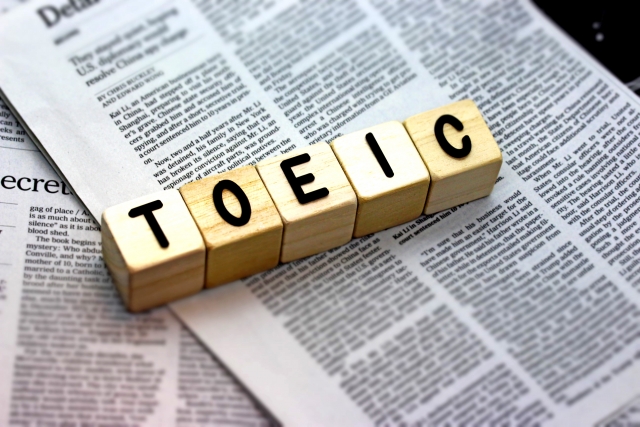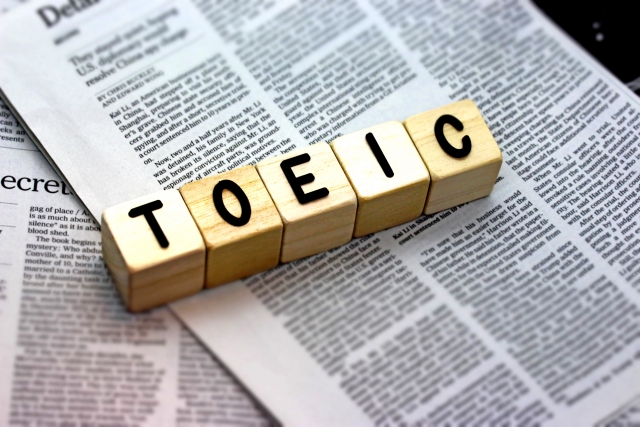ビジネス英語を強化するTOEIC攻略ステップアップガイドの第17回は「異文化コミュニケーション:グローバルビジネスでの対応力」です。グローバル化が進む現代のビジネスシーンでは、語学力だけでなく、文化的背景の異なる相手との円滑なコミュニケーション能力が求められます。今回は、TOEICテストで出題される異文化コミュニケーションの要素と、実際のビジネスシーンでの効果的な対応方法について解説します。
1. 異文化コミュニケーションの基本概念
異文化コミュニケーションとは、文化的背景が異なる人々の間で行われるコミュニケーションのことです。効果的な異文化コミュニケーションには、相手の文化に対する理解と尊重が不可欠です。
| 概念 | 説明 | ビジネスでの重要性 |
|---|---|---|
| 文化的知性(Cultural Intelligence) | 異なる文化的背景を持つ人々と効果的に交流する能力 | グローバルチームでの協働、国際取引、海外市場での成功に直結 |
| 高コンテキスト文化 vs 低コンテキスト文化 | コミュニケーションがどれだけ文脈に依存するかの度合い | メッセージの伝え方、直接性/間接性の調整に影響 |
| 価値観の違い | 個人主義 vs 集団主義、権力格差などの文化的価値観 | 意思決定プロセス、リーダーシップスタイル、チーム形成に影響 |
| 非言語コミュニケーション | ジェスチャー、アイコンタクト、空間の使い方など | 誤解を避け、信頼関係を構築するために重要 |
異文化コミュニケーションの障壁
異文化間でのコミュニケーションには、様々な障壁が存在します。これらを理解し、克服することが重要です。
主な障壁とその克服法:
- ステレオタイプと偏見: 文化に対する固定観念を認識し、個人の多様性を尊重する
- 言語の壁: 明確でシンプルな表現を使い、理解を確認する習慣をつける
- 非言語コミュニケーションの違い: 各文化特有のジェスチャーや表情の意味を学ぶ
- 価値観の衝突: 違いを認識し、共通点を見つけることに焦点を当てる
- 自民族中心主義: 自分の文化を基準に他の文化を判断せず、異なる視点を理解しようとする姿勢を持つ
2. TOEICテストにおける異文化コミュニケーション要素
TOEICテストでは、リスニングとリーディングの両セクションにおいて、異文化コミュニケーションに関連する要素が含まれています。これらの要素を理解することで、テストスコアの向上につながります。
リスニングセクションでの異文化要素
Part 3(会話問題)と Part 4(説明文問題)でよく出る場面:
- 国際会議やグローバルチームでのディスカッション
- 異なる国の支社間のビデオ会議
- 外国人顧客や取引先とのビジネス交渉
- 多国籍企業での社内コミュニケーション
- 海外出張や国際イベントに関する説明
注目すべきポイント:
- 様々な英語のアクセント(アメリカ英語、イギリス英語、オーストラリア英語など)
- 異文化間の誤解や調整に関する会話内容
- 国際的なビジネス慣行や礼儀作法に関する言及
- 文化的な背景に基づく暗黙の前提や期待値の違い
リーディングセクションでの異文化要素
Part 5(短文穴埋め)と Part 7(読解問題)でよく出る内容:
- 異文化間ビジネスマナーに関する記事やメモ
- 国際的なビジネス慣行についての説明文
- 多国籍企業の方針や手順書
- グローバルプロジェクトのレポートや計画書
- 異文化トレーニングに関するメールや案内
出題されやすい語彙・表現:
- cultural awareness(文化的意識)
- cross-cultural communication(異文化間コミュニケーション)
- global mindset(グローバルな考え方)
- diversity and inclusion(多様性と包括性)
- cultural sensitivity(文化的感受性)
- adapt to local customs(現地の慣習に適応する)
- business etiquette(ビジネスエチケット)
3. 文化圏別ビジネスコミュニケーションの特徴
効果的な異文化コミュニケーションのためには、主要な文化圏におけるコミュニケーションスタイルの違いを理解することが重要です。以下に、主な文化圏のビジネスコミュニケーションの特徴を紹介します。
北米(アメリカ、カナダ)
コミュニケーションスタイル:
- 直接的で明示的なコミュニケーション(低コンテキスト文化)
- 個人主義的価値観を重視
- フラットな組織構造を好む傾向
- 時間厳守と効率性を重視
- カジュアルで親しみやすい態度
ビジネスシーンでの特徴:
- 会議では活発な議論と意見交換が奨励される
- 初対面でもファーストネームで呼び合うことが多い
- 明確な目標設定と結果重視のアプローチ
- プレゼンテーションではデータと事実に基づく説得が効果的
有効なアプローチ:
“I think we should consider option A because it will increase our efficiency by 15%.”
(私はオプションAを検討すべきだと思います。なぜなら効率が15%向上するからです)
ヨーロッパ(イギリス、フランス、ドイツなど)
コミュニケーションスタイル:
- 国によって大きく異なるが、一般的に北米よりもフォーマル
- イギリス: 間接的で控えめな表現、ユーモアを重視
- ドイツ: 直接的で事実重視、徹底した準備を評価
- フランス: 論理的思考と洗練された表現を重視
ビジネスシーンでの特徴:
- 肩書きと階層を重視する傾向(特に大陸ヨーロッパ)
- 会議前の準備と詳細な資料が期待される
- 長期的な関係構築を重視
- ビジネスと私生活の明確な区別
有効なアプローチ:
イギリス: “I wonder if we might consider looking at alternative solutions?”
(代替案を検討してみてはいかがでしょうか)
ドイツ: “Based on our analysis, option B is the most efficient solution.”
(分析に基づくと、オプションBが最も効率的な解決策です)
東アジア(日本、中国、韓国)
コミュニケーションスタイル:
- 間接的で暗示的なコミュニケーション(高コンテキスト文化)
- 集団主義的価値観を重視
- 階層と年功序列を尊重
- 調和とフェイス(面子)の保持を重視
- “No”を直接言わない傾向
ビジネスシーンでの特徴:
- 意思決定は合意形成プロセス(根回し)を通じて行われることが多い
- 関係構築と信頼の確立が取引前に重要
- 会議は情報共有の場であり、重要な決定は事前に行われていることが多い
- 沈黙は思考や尊重の表れとして肯定的に捉えられる
有効なアプローチ:
“We understand your concerns and would like to suggest a few considerations that might address these issues.”
(ご懸念は理解しています。これらの問題に対処するためのいくつかの検討事項を提案させていただきたいと思います)
中東・アラブ諸国
コミュニケーションスタイル:
- 関係性重視の高コンテキスト文化
- 感情表現が豊かで、情熱的なコミュニケーション
- 個人的な関係と信頼の構築が最重要
- 時間の概念がより柔軟(ポリクロニック)
ビジネスシーンでの特徴:
- ビジネスの前に個人的な会話と関係構築が期待される
- 交渉は長期間かかり、複数の会合が必要なことが多い
- 直接対面でのコミュニケーションが重視される
- 名誉と尊厳に関する配慮が非常に重要
有効なアプローチ:
“We value our relationship with your company and are committed to finding a solution that benefits us both.”
(貴社との関係を大切にし、双方に利益をもたらす解決策を見つけることに尽力しています)
4. 異文化ビジネスシーンで役立つ英語表現
異文化間のビジネスコミュニケーションで役立つ英語表現を、場面別にまとめました。これらの表現を適切に使うことで、誤解を減らし、円滑なコミュニケーションが可能になります。
国際会議・ミーティングでの表現
明確化を求める:
- “I’d like to make sure I understand your point correctly. Are you saying that…?”(あなたのポイントを正しく理解できているか確認したいです。つまり…ということですか?)
- “Could you elaborate on what you mean by…?”(…という意味をもう少し詳しく説明していただけますか?)
- “I’m not familiar with that term. Could you explain it?”(その用語に馴染みがありません。説明していただけますか?)
文化的な違いに言及する:
- “In my experience, the approach to this issue varies across cultures.”(私の経験では、この問題へのアプローチは文化によって異なります)
- “I understand that in your culture, this might be viewed differently.”(あなたの文化では、これが異なる見方をされるかもしれないことは理解しています)
- “Perhaps we could discuss how this works in each of our markets?”(それぞれの市場でこれがどのように機能するか話し合ってみませんか?)
配慮を示す:
- “I’d be interested to hear everyone’s perspective on this matter.”(この件について皆さんの視点をお聞きしたいと思います)
- “Let’s make sure we’re considering this from multiple cultural perspectives.”(複数の文化的視点からこれを考慮するようにしましょう)
- “Please feel free to share if you have a different approach in your region.”(あなたの地域で異なるアプローチがあれば、遠慮なく共有してください)
異文化間の交渉・商談での表現
関係構築:
- “We really value the opportunity to work with your company.”(貴社との協働の機会を本当に大切にしています)
- “I’m interested in learning more about how business operates in your country.”(あなたの国でのビジネスの運営方法についてもっと学びたいと思っています)
- “We hope this is the beginning of a long and successful partnership.”(これが長く成功するパートナーシップの始まりになることを願っています)
期待値の調整:
- “In our culture, we typically approach this type of negotiation by…”(私たちの文化では、通常このタイプの交渉には…というアプローチをします)
- “I understand that our timelines may differ. Let’s discuss what would work best for both of us.”(タイムラインが異なる可能性があることは理解しています。双方にとって最良の方法を話し合いましょう)
- “Could you help me understand what would be considered a reasonable offer in your market?”(あなたの市場で合理的なオファーと考えられるものを理解するのを手伝っていただけますか?)
柔軟性を示す:
- “We’re open to adapting our proposal to better suit your needs.”(あなたのニーズにより適合するよう、提案を調整することに前向きです)
- “Perhaps we can find a middle ground that respects both of our business cultures.”(双方のビジネス文化を尊重する中間点を見つけられるかもしれません)
- “We’re willing to be flexible on the timeline if that would help move this forward.”(前進させるのに役立つなら、タイムラインについては柔軟に対応する用意があります)
国際チーム・プロジェクトでの表現
インクルーシブなコミュニケーション:
- “Let’s make sure everyone has a chance to share their input.”(全員が意見を共有する機会を確保しましょう)
- “I’d like to hear from our colleagues in [country/region] on this topic.”(この話題について[国/地域]の同僚の意見を聞きたいと思います)
- “Please interrupt me if I’m speaking too quickly or if anything is unclear.”(早すぎたり、不明点があれば遠慮なく中断してください)
時差・言語の配慮:
- “I appreciate you joining the call despite the late hour in your time zone.”(あなたのタイムゾーンでの遅い時間にもかかわらず、通話に参加していただきありがとうございます)
- “I’ll send a follow-up email summarizing our discussion for those who couldn’t attend.”(参加できなかった人のために、議論をまとめたフォローアップメールを送ります)
- “Let me know if you’d prefer we use simpler language or speak more slowly.”(より簡単な言葉を使うか、もっとゆっくり話す方が良いか教えてください)
フィードバックと調整:
- “How does this approach align with how you typically work in your office?”(このアプローチは、あなたのオフィスでの一般的な働き方とどう調和していますか?)
- “Are there any cultural holidays or work practices we should be aware of when planning our timeline?”(タイムラインを計画する際に意識すべき文化的な休日や仕事の習慣はありますか?)
- “I realize our communication styles may differ. Please let me know if my approach isn’t working for you.”(コミュニケーションスタイルが異なる可能性があることは理解しています。私のアプローチがあなたに合わない場合は教えてください)
異文化間の誤解を解消する表現
誤解の認識と対応:
- “I think there might be a misunderstanding. Let me try to clarify…”(誤解があるかもしれません。明確にしてみましょう…)
- “I apologize if my message came across differently than intended.”(意図したものとは異なって伝わってしまったなら、申し訳ありません)
- “Perhaps we’re looking at this from different perspectives. Let’s take a step back.”(異なる視点からこれを見ているのかもしれません。一歩下がって考えましょう)
建設的な解決策の提案:
- “Moving forward, would it help if we [specific action]?”(今後は、[具体的な行動]すれば役立つでしょうか?)
- “To avoid similar misunderstandings in the future, perhaps we could…”(今後同様の誤解を避けるために、おそらく私たちは…できるでしょう)
- “I value our working relationship and want to make sure we’re communicating effectively.”(私たちの仕事上の関係を大切にしており、効果的にコミュニケーションを取れるようにしたいと思います)
5. TOEIC問題で見る異文化コミュニケーション事例
TOEICのリスニングセクションとリーディングセクションには、異文化コミュニケーションに関連する問題が頻出します。以下に典型的な問題例と解き方のコツを紹介します。
リスニング問題例(Part 3: 会話問題)
会話:
Man: “I noticed that our Japanese clients didn’t give us a clear answer about the proposal during the meeting. Do you think they weren’t interested?”
Woman: “Actually, in Japanese business culture, people often avoid saying ‘no’ directly to maintain harmony. They might use indirect expressions or silence to indicate hesitation or disagreement.”
Man: “I see. So what would be the best way for us to get their feedback?”
Woman: “I’d suggest following up with an email asking specific questions, or having a more private conversation with their lead representative where they might feel more comfortable expressing concerns.”
質問:
What does the woman explain about Japanese business culture?
(A) They prefer written communication to meetings
(B) They avoid direct refusals to maintain harmony
(C) They expect multiple proposals before making decisions
(D) They only provide feedback through lead representatives
解説: 女性は「日本のビジネス文化では、調和を維持するために直接的に『ノー』と言うことを避ける」と説明しています。よって正解は(B) They avoid direct refusals to maintain harmony です。
リーディング問題例(Part 7: 読解問題)
文章:
From: HR Department
To: All Staff
Subject: Cultural Awareness Training for International Business
Dear Team Members,
As our company expands its operations globally, we’re pleased to announce a new training program on cultural awareness in international business. This program is designed to help you navigate the complexities of working with colleagues and clients from diverse cultural backgrounds.
The training will cover the following key areas:
– Understanding cultural dimensions and their impact on business practices
– Communication styles across different regions
– Building rapport and trust in multicultural teams
– Negotiation strategies for international business
– Protocol and etiquette for global business meetings
Sessions will be tailored to specific regions where we currently operate, including East Asia, Europe, and the Middle East. Special attention will be given to potential areas of misunderstanding and how to prevent them.
The first session will be held on March 15th from 10:00 AM to 12:00 PM in the Main Conference Room. Additional sessions will be scheduled over the next three months. Remote employees can participate via videoconference.
Please register for the training by completing the form on the company intranet by March 10th. Indicate which regional sessions you are most interested in attending.
We believe this training will be valuable for everyone, regardless of whether you currently work directly with international teams. As our company continues to grow globally, understanding different cultural perspectives will become increasingly important for all roles.
Please contact the HR department if you have any questions.
Regards,
HR Department
質問:
What is the main purpose of the training program described in the email?
(A) To teach foreign languages to employees
(B) To prepare employees for relocation to other countries
(C) To help employees work effectively with people from different cultures
(D) To inform employees about the company’s international expansion plans
解説: メールには「この研修は、多様な文化的背景を持つ同僚やクライアントとの仕事の複雑さをナビゲートするのに役立つよう設計されています」と書かれています。よって正解は(C) To help employees work effectively with people from different cultures です。
TOEIC攻略のための異文化コミュニケーション問題対策
- 様々な文化のビジネス慣行に関する基本知識を身につける: 主要な地域(北米、ヨーロッパ、アジア、中東など)のビジネス文化の特徴を学びましょう。
- 異文化コミュニケーションに関する語彙を増やす: cultural awareness, etiquette, protocol, customs, traditions などの語彙に慣れておきましょう。
- シチュエーションの文脈を理解する: 問題文中の状況(国際会議、海外との交渉など)を正確に把握しましょう。
- 異なる英語のアクセントに慣れる: アメリカ英語、イギリス英語、オーストラリア英語など、様々なアクセントのリスニング教材で練習しましょう。
- ステレオタイプに注意する: 文化に関する一般的な特徴を理解することは重要ですが、個人差があることも忘れないようにしましょう。
6. 実践的な異文化コミュニケーション能力の強化法
TOEICスコアを向上させるだけでなく、実際のビジネスシーンで役立つ異文化コミュニケーション能力を身につけるための方法を紹介します。
自己認識と文化的感受性を高める
実践方法:
- 自分の文化的フィルターを認識する: 自分の価値観や行動様式が文化によってどう形成されているかを内省しましょう。
- 文化的価値観の違いを学ぶ: ホフステードの文化的次元論などのフレームワークを通じて、文化による価値観の違いを理解しましょう。
- 判断を保留する習慣をつける: 異なる行動や考え方に出会ったとき、すぐに評価せず、その背景にある文化的理由を考えるようにしましょう。
- 多様な文化背景の人々との交流を増やす: 様々な国や文化出身の人々との対話を通じて、実践的な理解を深めましょう。
異文化ビジネスシーンの擬似体験
トレーニング方法:
- ロールプレイングの実践: 特定の文化背景を持つビジネスパートナーとの会議や交渉のシナリオを設定し、適切なコミュニケーション方法を練習しましょう。
- ケーススタディの分析: 異文化ビジネスの成功例や失敗例を分析し、どのような要因が結果に影響したかを考察しましょう。
- 異文化シミュレーションゲームへの参加: ビジネススクールやトレーニングプログラムで提供されている異文化シミュレーションに参加し、実践的な経験を積みましょう。
- 外国語ニュースやビジネス記事の定期的な閲覧: 異なる文化圏のビジネス事情や価値観に触れることで、理解を深めましょう。
異文化チームでの効果的なコミュニケーションスキル
強化ポイント:
- 明確でシンプルな表現を使う: 専門用語や慣用句を避け、誤解のリスクを減らします。
- 積極的に理解を確認する: “Does that make sense?” や “Could you summarize what we’ve agreed on?” など、理解を確認する質問を定期的に行います。
- 文書による補完: 重要な情報や合意事項は、口頭でのコミュニケーションに加えて、メールや文書で確認します。
- 非言語コミュニケーションへの注意: 表情、姿勢、声のトーンなどの非言語的な要素に注意を払い、文化による違いを理解します。
- 適応力と柔軟性を育てる: 状況に応じてコミュニケーションスタイルを調整する能力を身につけます。
7. グローバルビジネスでの文化的失敗を避けるためのポイント
グローバルビジネスにおいて、文化的な誤解や失敗を避けるための重要なポイントを紹介します。
文化的失敗を避けるための5つのポイント
- 事前リサーチの徹底: 取引相手の国や地域のビジネス慣行、タブー、エチケットについて事前に調査しましょう。
- ステレオタイプの回避: 一般的な文化的特徴は理解しつつも、個人差があることを常に意識しましょう。
- 謙虚さと学ぶ姿勢の維持: 「自分の方法が最良」という考えを避け、異なるアプローチから学ぶ姿勢を持ちましょう。
- 重要な意思決定の前に現地の意見を求める: 現地の同僚やパートナーの意見を聞き、文化的に適切な選択をしましょう。
- 失敗からの学習と調整: 文化的な誤解が生じた場合は、それを学びの機会と捉え、次回に活かしましょう。
よくある文化的失敗と対策
| よくある失敗 | 影響 | 対策 |
|---|---|---|
| 時間の概念の違いを理解せず、厳格なスケジュールを押し付ける | フラストレーションや信頼関係の損失 | 文化によって時間の捉え方が異なることを認識し、柔軟なスケジュール設定を心がける |
| 直接的すぎるコミュニケーションスタイルを高コンテキスト文化で使用する | 相手に不快感や不信感を与える | 相手の文化のコミュニケーションスタイルを学び、適応する |
| 名刺交換や挨拶などの儀礼的側面を軽視する | 相手に尊重されていないという印象を与える | 各文化における重要な儀礼や習慣を事前に学び、尊重する |
| 意思決定プロセスの文化的違いを考慮しない | 合意に達するまでに不必要な遅延や誤解が生じる | 相手の文化における意思決定の仕方(トップダウンか合意形成か)を理解し、期待を調整する |
| ジェスチャーや空間の使い方などの非言語コミュニケーションの違いを無視する | 意図せずに相手を不快にしたり、誤解を生じさせる | 異なる文化における非言語コミュニケーションの意味を学び、自分の行動を調整する |
8. 今日から始める異文化コミュニケーション能力強化のためのアクション
異文化コミュニケーション能力強化のための3つのアクション
- 異文化ニュースフィードの購読: 異なる国や地域のニュースソースを定期的にチェックし、様々な視点や価値観に触れることで、グローバルな視野を広げましょう。例えば、BBC World、Al Jazeera、Channel News Asiaなど、異なる地域のニュースサイトをブックマークしておきましょう。
- 異文化対応の自己評価: 自分の文化的背景がコミュニケーションスタイルにどう影響しているかを内省し、改善点を見つけましょう。オンラインで利用できる「文化的知性(CQ)」の自己評価ツールなどを活用してみましょう。
- 言語交換パートナーとの練習: 異なる文化背景を持つ人とのランゲージエクスチェンジを通じて、実際のコミュニケーションを練習しましょう。オンラインの言語交換プラットフォームを利用すれば、世界中の相手と交流できます。
9. よくある質問と回答
Q1: 異文化コミュニケーションスキルはTOEICスコアにどう影響しますか?
A1: TOEICテストには、国際的なビジネスシーンを反映した問題が多く含まれています。異文化コミュニケーションの知識があると、特にリスニングセクションのPart 3(会話問題)やPart 4(説明文問題)、リーディングセクションのPart 7(読解問題)での文脈理解が深まり、正答率が高まる傾向があります。
Q2: 相手の文化に合わせすぎると、自分らしさが失われませんか?
A2: 異文化適応は自分のアイデンティティを捨てることではなく、効果的なコミュニケーションのために柔軟性を持つことです。自分の価値観や個性を保ちながらも、相手の文化を尊重する姿勢を示すことが重要です。バランスを取りながら、状況に応じた適切な対応を心がけましょう。
Q3: 文化的な背景が多様なチームでリーダーシップを発揮するコツはありますか?
A3: 多様性を強みと捉え、各メンバーの文化的背景や強みを理解し活かすことが大切です。明確なコミュニケーション、定期的なフィードバック、透明性のある意思決定プロセス、そして様々な視点を尊重する姿勢を示しましょう。また、チーム内での文化的な学び合いを促進する環境づくりも効果的です。
Q4: ビジネスメールの書き方に文化的な違いはありますか?
A4: はい、大きな違いがあります。例えば、アメリカでは簡潔で直接的なメールが好まれる傾向がありますが、日本やアジアの多くの国では、関係構築のための丁寧な挨拶や前置きが重要です。また、フォーマリティのレベル、署名の書き方、返信の速さへの期待なども文化によって異なります。相手の文化に合わせたスタイルを心がけましょう。
Q5: 異文化間の誤解が生じた場合、どう対処すべきですか?
A5: まず、冷静さを保ち、防衛的にならないことが重要です。誤解があったことを認識し、オープンなコミュニケーションを通じて明確化を図りましょう。「私の意図は…でした」と説明し、相手の視点を理解しようと努めます。必要に応じて謝罪し、今後同様の誤解を避けるための方法を一緒に考えましょう。誤解を学びの機会と捉える姿勢も大切です。
まとめ
グローバル化が進む現代のビジネス環境では、異文化コミュニケーション能力は欠かせないスキルとなっています。単に言語を理解するだけでなく、文化的背景の違いを認識し、それに適応できる能力が求められます。
TOEICテストでは、こうした異文化コミュニケーションの要素が様々な形で出題されるため、文化的な知識や感受性を高めることは、スコアアップにも直結します。また、実際のビジネスシーンでも、こうした能力は信頼関係の構築や効果的な協働につながります。
本記事で紹介した異文化コミュニケーションの基本概念、文化圏別の特徴、有用な英語表現、そして実践的なトレーニング方法を活用して、グローバルビジネスで活躍できる対応力を身につけていきましょう。
異文化理解は一朝一夕に身につくものではありませんが、継続的な学習と実践、そして異なる文化への敬意と好奇心を持ち続けることで、グローバルなビジネスパーソンとしての価値を高めることができます。
次回は「ビジネス英語のトレンド:最新の表現とデジタルコミュニケーション」をテーマに、変化し続けるビジネス英語の最新動向について解説します。お楽しみに!


